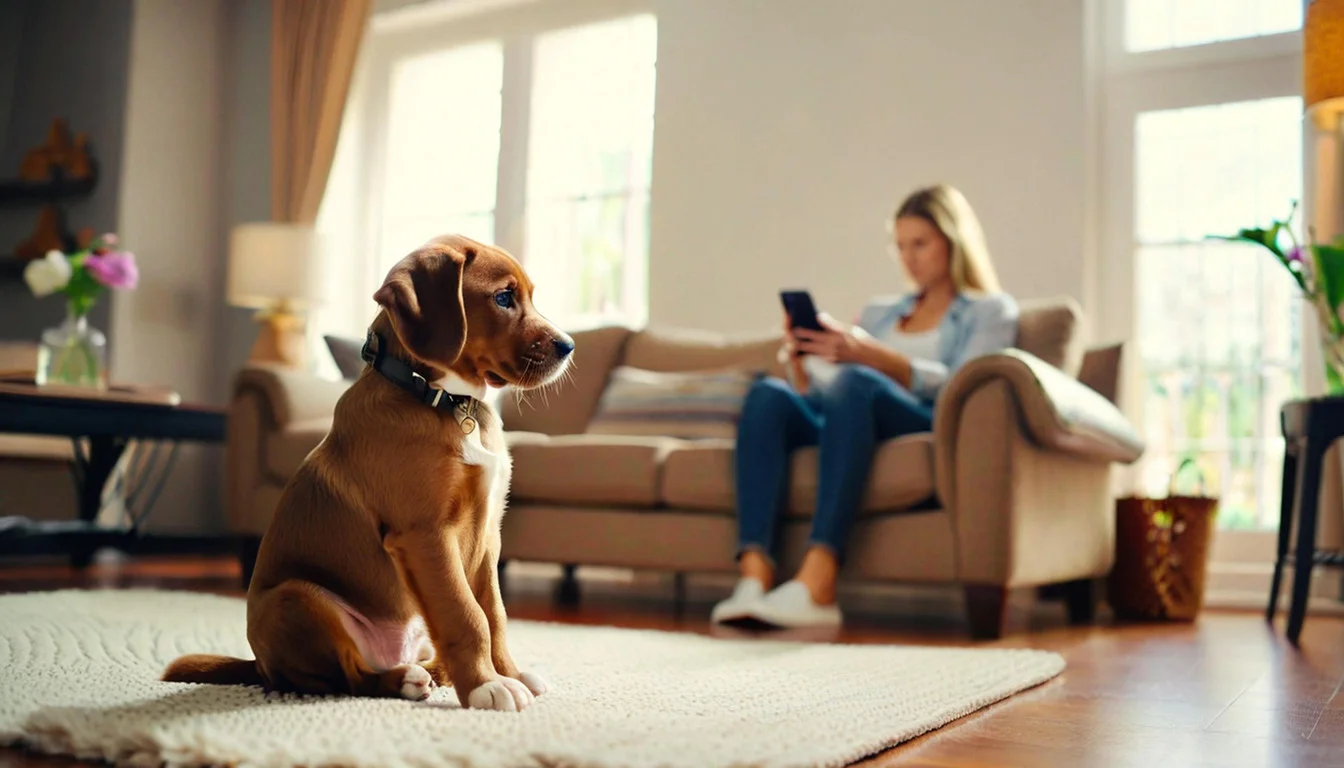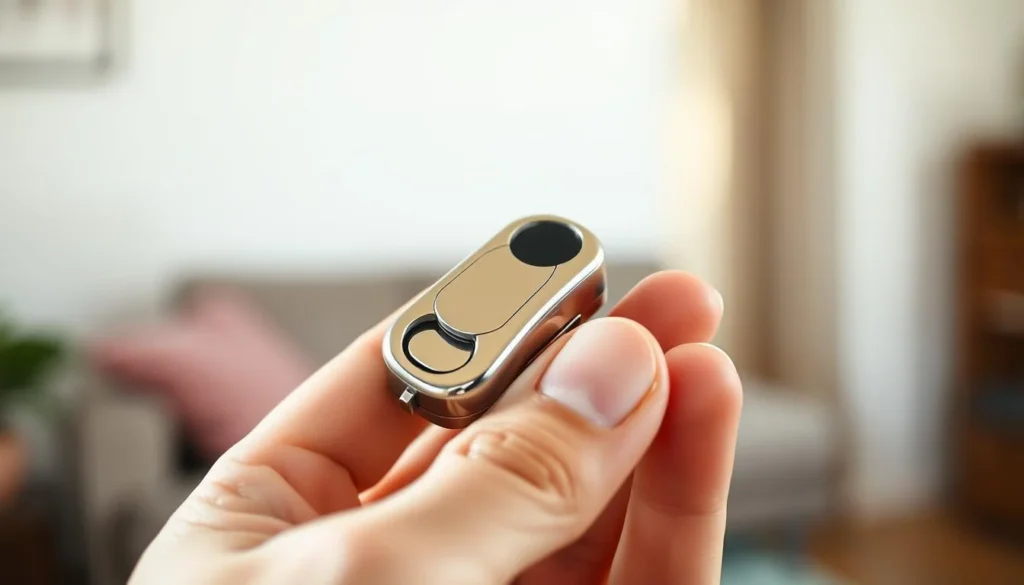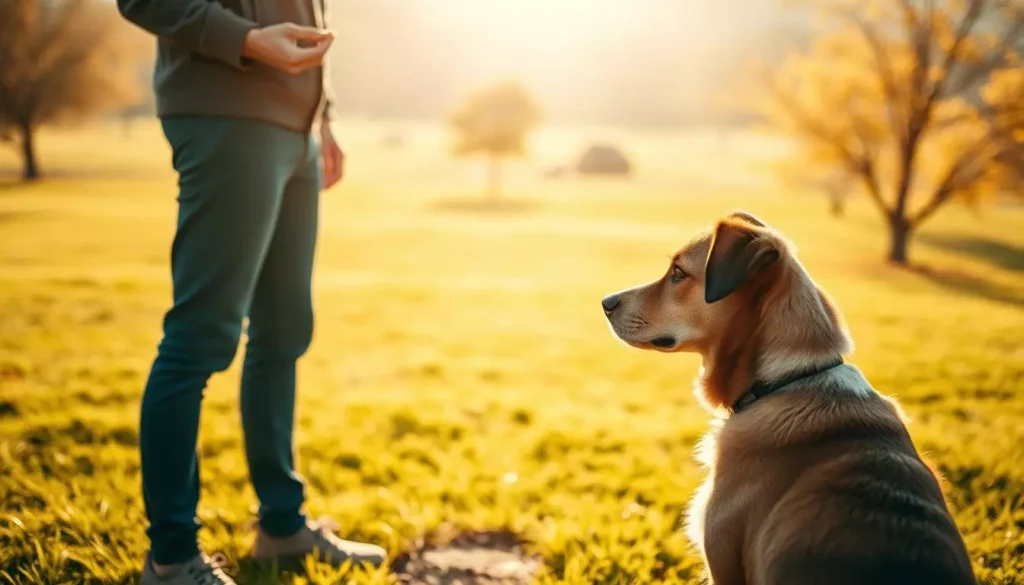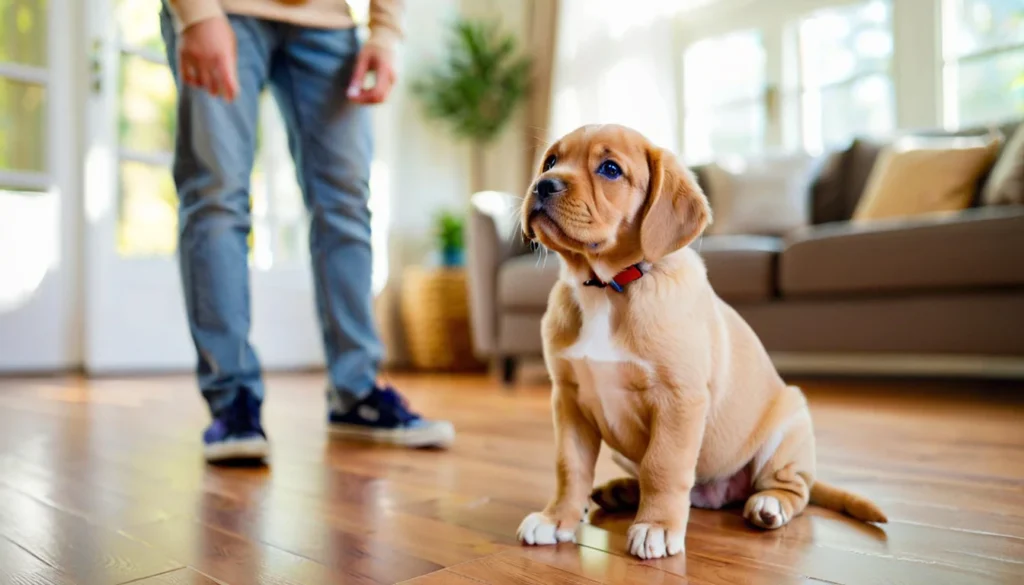I remember the first night I brought home a lab mix from the shelter. She trembled in my lap, her eyes bright with every sound. That small face taught me something simple—puppies start learning right away. Whether you get a puppy at eight weeks or a bit older, starting training early is key.
From my experience, the best time to start training is when you bring them home, usually around 8 weeks. Puppies learn a lot from people, animals, and their surroundings. Early training, even if it's just simple cues, is crucial.
This guide will help you understand when to start training your puppy. We'll cover the best age, routines to start right away, and when to sign up for classes. If you're wondering when to start puppy classes, I'll make it easy and practical. You can start today with confidence.
Key Takeaways
- Puppies start learning as soon as they arrive—training can begin when you bring them home.
- The best age to start puppy training is commonly around 8 weeks, but the process is adaptable.
- Short, consistent sessions build emotional security and good habits.
- Early routines create a foundation for adult confidence and manners.
- Knowing when to start puppy classes depends on vaccination status and your pup’s readiness.
how soon can you start training a puppy
Many ask when to start training a puppy. My quick reply is: right when they arrive, learning starts. Puppies pick up on cues from people, surfaces, sounds, and routines. A calm, safe space is key for good training from the start.
I guide owners with simple steps to start training. We use brief, gentle moments for name recognition and crate placement. These small victories help set a positive tone and ease stress.
When planning puppy training, I follow age guidelines. Puppies usually go home around eight weeks. This is when they best absorb new information, so I focus on short, regular sessions.
What I mean by "start" is basic cues and routines. Early training includes teaching a name, sit, come, and potty habits. A routine helps with housetraining and gives a sense of order.
Building a strong bond is my first priority. We start with gentle cues, crate practice, and a regular feeding schedule. These small steps lay the groundwork for more advanced training later on.
Benefits of starting training early for long-term behavior
Starting puppy training early has many benefits that last a lifetime. Small, consistent lessons help build trust. They also set the stage for calm behavior and confident choices.
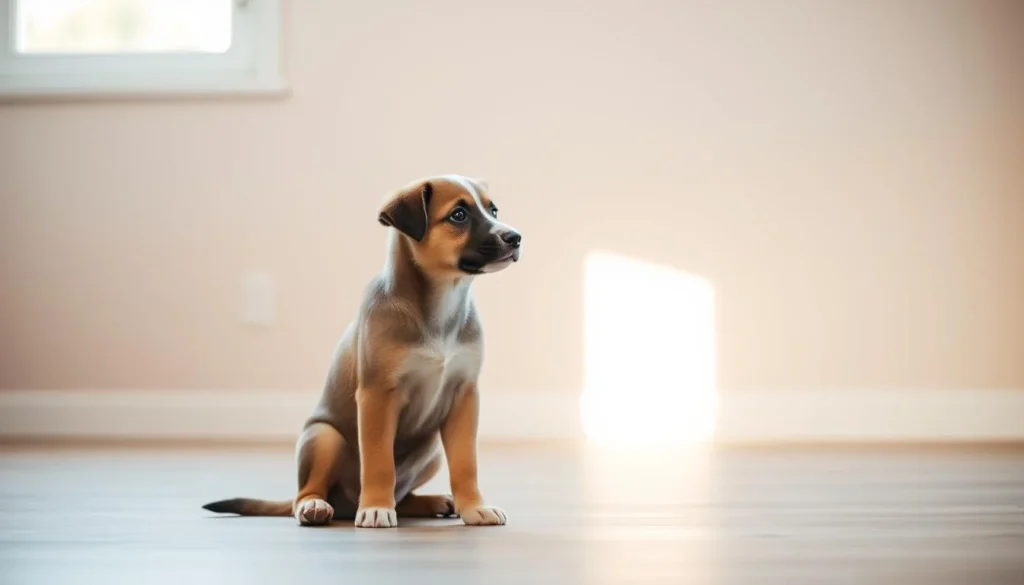
Foundation for adult confidence and manners
Introducing puppies to different sounds and gentle handling early on makes them feel safe. This is especially important during the puppy socialization age. It helps them feel less scared of new things.
Using simple rules and positive routines strengthens our bond. This bond makes learning new things easier as they grow. It also keeps their manners in check.
Improved housetraining and reduced problem behaviors
Potty training is best started between 8–12 weeks. This is the best time to teach house skills. Starting early helps puppies learn faster and have fewer accidents.
Crate training helps with housetraining and stops destructive behavior. It also helps with separation anxiety. Teaching them to wait and sit before meals stops jumping and nipping.
Keeping training sessions short and regular helps puppies learn quickly. This approach reduces bad behaviors and leads to a calmer dog as an adult.
Positive reinforcement: the only recommended method
I think the best way to teach a puppy is with rewards and trust. Positive reinforcement puppy training creates a strong bond and lowers stress. I use short, focused sessions that fit into a simple puppy obedience training schedule to keep learning fun and consistent.
Veterinary behaviorists and trainers prefer force-free work because it reduces fear and fosters cooperation. Studies show punishment and aversive tools can lead to long-term anxiety. I follow advice from experienced trainers like Kate Naito who emphasize trust over intimidation when shaping behavior.
Practical rewards: food, toys, and praise
Find what motivates your pup. Kibble, small training treats, a favorite squeaky, or warm verbal praise all work. The Puppy Academy approach suggests using the puppy’s meals as training fuel in early sessions. I recommend starting with high-value treats, then fading to praise as the pup becomes reliable.
How I structure short training sessions
- Keep sessions under five minutes for very young pups; aim for up to 15 minutes total per day.
- Use clear cues and consistent hand signals so your puppy learns faster.
- End every session on a win to make learning feel rewarding.
For someone new, puppy training tips for beginners include using a predictable puppy obedience training schedule and relying on positive reinforcement puppy training as your core method. I phase rewards from food to praise and intermittent treats as skills improve. This approach keeps training sustainable and kind.
How soon can you start crate training a puppy
Many people wonder when to start crate training a puppy. My answer is simple: start from day one. Begin with gentle steps that build trust. A crate provides a safe space, aids in housetraining, and reduces separation stress when introduced correctly.
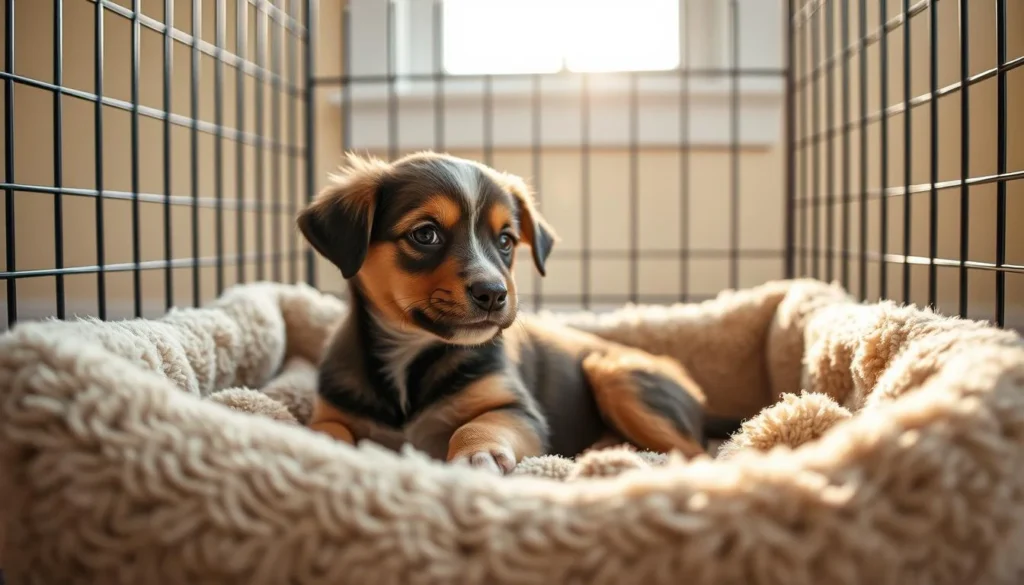
For crate training, I follow some key tips. First, place the crate in a quiet area of your home. Make it inviting with soft bedding and chew-safe toys.
Start by letting the puppy enter the crate on its own. Use treats to make it a positive experience. Place treats inside and feed meals near or in the crate to build a positive association.
Next, practice closing the crate door for short periods. Stay close and gradually increase the time. Always watch for signs of stress and keep it positive.
As the puppy becomes more comfortable, you can increase crate time. Remember, never use the crate as punishment. Always consider the puppy's age and comfort level, especially for longer periods.
Here are some quick tips for crate training a puppy:
- Choose a crate that will fit the adult dog, so the puppy can grow into it.
- Place bedding and a safe chew toy inside the crate.
- Feed meals at the crate entrance, then inside.
- Practice short door closures and praise calm behavior.
- Use the crate for predictable rest times, not as punishment.
A simple timeline helps owners plan crate training. Below is a guide by typical puppy training age stages. This helps match expectations and pace training to your puppy's comfort.
| Age Range | Goal | Typical Session Length |
|---|---|---|
| 8–10 weeks | Introduce crate, threshold work, feed inside | 1–5 minutes, many times daily |
| 10–14 weeks | Short door closures, brief alone moments | 5–15 minutes, increase gradually |
| 3–4 months | Longer rests, overnight tolerance | 30 minutes to a few hours, depending on needs |
How soon can you start potty training a puppy
I start potty training a new puppy as soon as they arrive home. Early routines help set expectations and cut down on accidents. Each dog is different, but a clear plan makes progress steady and predictable.
Typical starting age and realistic timeline
Puppy owners often ask when to begin. I recommend starting between 8 and 12 weeks of age. Many puppies show quick wins within one week to one month, though reliable house manners often take several months.
Expect ongoing reinforcement through 5–6 months and beyond. The puppy training timeline varies by breed, health, and consistency. I watch for steady reductions in accidents as the best sign of progress.
Daily schedule and practical tips
Consistency matters. I feed on a set schedule and take the pup out after waking, after play, and after meals. Use the age-in-months ÷ 2 rule to estimate how long they can hold it.
I take the puppy outside on leash and stand quietly in one spot for about five minutes. This limits distractions. I praise and treat immediately after they go to reinforce the behavior.
Crate time helps limit accidents when I cannot supervise. I stop play and go to the door the moment the puppy shows signs they need to go. Supervision, patience, and short, frequent outings build success across the puppy training timeline.
| Stage | Age | What I do | Expected progress |
|---|---|---|---|
| Introduction | 8–12 weeks | Set feeding times, frequent outdoor trips, leash outings for cues | First consistent successes within days to weeks |
| Building consistency | 12 weeks–6 months | Follow potty training puppy schedule, reward immediately, increase intervals slowly | Fewer accidents, longer holds, clearer cues |
| Reinforcement | 6 months–12 months | Practice in different places, maintain routine, supervise less intensively | Greater reliability indoors and out |
How soon can you start obedience training for a puppy
I start obedience training with puppies right after they come home. It helps build a strong bond and sets clear rules. Short, positive sessions teach manners and focus without stressing the puppy.
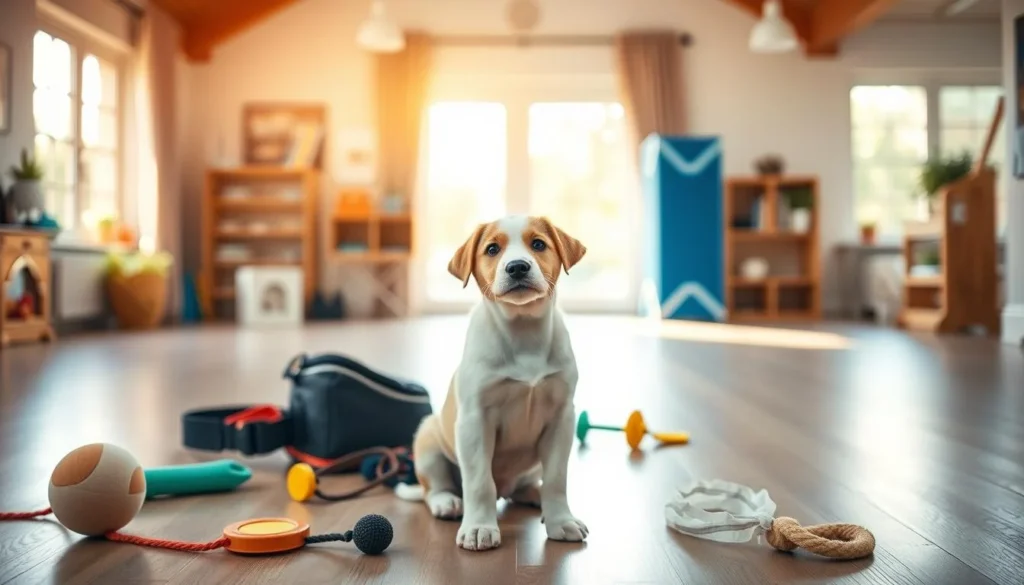
I stick to a simple training schedule that fits into daily life. At first, sessions are 3–5 minutes long, several times a day. I use treats, calm praise, and a gentle leash or harness to guide them.
Beginner cues appropriate for the first weeks
Start with name recognition, “sit,” and a welcoming recall right away. I teach leash manners by clipping on a lightweight harness and rewarding the pup for walking near me. Beginner cues should be clear, consistent, and use food lures.
I keep each repetition short to keep the pup engaged and avoid frustration. I add games like waiting for a treat until the pup sits. These small wins help build a strong bond and focus.
Progression to longer duration and distractions
Once basic cues are mastered, I introduce “place,” “down,” “stay,” and “leave it.” I slowly increase duration, distance, and distractions. First, I practice in the living room, then a quiet yard, and finally a busier park once vaccinations allow.
To follow the 3Ds—distance, duration, distractions—I extend time by a few seconds each session. I increase distance in short steps and add mild distractions before moving to real-world challenges. With steady practice, most puppies learn basic cues by five to six months.
- Keep sessions short and frequent to match puppy attention spans.
- Use a predictable puppy obedience training schedule so cues occur at similar times each day.
- Celebrate small progress and revisit easier steps when needed.
When to introduce socialization and puppy classes
It's tempting to throw your puppy into everything right away. But timing and safety are key. Start with gentle exposure as soon as they're weaned. This early stage helps build trust and curiosity.
For puppy socialization age, most experts agree on starting structured play by 8 weeks. Formal classes usually begin around 12–16 weeks, once they're fully vaccinated.
Begin with short, positive sessions. Before they're fully vaccinated, choose low-risk activities. This includes supervised meetings with calm dogs, car rides, and quiet outdoor trips. Always check with your vet about what's safe for your puppy.
When to start puppy classes varies by puppy and local rules. Some trainers accept puppies at 8–10 weeks for socialization groups. But formal classes with off-leash play wait until they're 12–16 weeks and fully vaccinated.
Good socialization means varied, positive, and brief experiences. Introduce your puppy to people of different ages, various surfaces, and safe public sights. Reward calm behavior and never force contact. Quality is more important than quantity; match each encounter to your puppy's comfort level.
For puppy training tips for beginners, focus on short sessions and plenty of praise. Keep interactions predictable. Watch for stress signals like yawning or turning away and pause if needed.
Below is a quick comparison to help plan socialization and class timing:
| Age range | Recommended focus | Safe activities |
|---|---|---|
| Weaning to 8 weeks | Home handling, short play with littermates | Gentle handling, different surfaces, quiet car rides |
| 8–12 weeks | Supervised socialization, low-risk groups | Calm vaccinated dogs, pup-only classes with precautions |
| 12–16 weeks | Formal puppy classes and broader exposure | Trainer-led classes, controlled public outings after vaccines |
| After 16 weeks | Expand variety and duration of experiences | Play dates, busy public places, grooming sessions |
Puppy training timeline and age-based milestones
I break down progress into clear stages for owners. This helps them know what to expect. I use a puppy training timeline to set goals and stay calm when things slow down.
8–10 weeks
When I bring the puppy home, we start a simple routine. This includes meals, naps, potty trips, and play. I teach the puppy to recognize their name, sit, and get used to a crate.
I also introduce the leash and harness. We start potty training right away with lots of praise. Early on, the puppy gets used to being around people.
3–6 months
Now, I work on impulse control and polite play. I teach commands like stay and leave it. Before meals or play, the puppy must sit.
Leash walks become more common, with short visits to other vaccinated dogs. I start combining commands like sit > down > stay. I use food rewards less and praise more to improve reliability.
6–12 months
I focus on making core skills stronger. We practice walking on a long line to improve recall. Socialization continues in different places to keep the puppy well-adjusted.
I keep a consistent daily routine to help the puppy grow. Most puppies learn basic commands well by one year. But, they still need practice.
- Use short, frequent sessions matched to the puppy training age.
- Record milestones so you can see the puppy training milestones clearly.
- Adjust expectations by breed, health, and temperament.
Puppy training tips for beginners
I share simple, practical tips to help you and your pup get off to the best start. Young dogs learn fast when sessions are short, rewards are clear, and practice is steady. I focus on what works for real homes and busy schedules.
Short, frequent sessions and ending on a win
Puppies have short attention spans, so I keep training to 5-minute bursts. Two to three short sessions a day adds up without wearing the pup out.
I always end on a success. A final cue the puppy knows turns the last moment into a positive memory and builds eagerness for the next session.
Use food and routine as training tools
I use the puppy’s regular kibble or small soft treats to reward attention and correct responses. A treat pouch makes quick reinforcement easier when I’m on a walk.
Linking training to daily routines helps too. I practice name recognition and sit around mealtimes and use potty breaks to reinforce housetraining. This keeps the puppy learning within normal life rhythms.
Be patient, consistent, and practice in different environments
I stay consistent with words and hand signals so the puppy learns one clear cue for each action. Early on, I reward every correct response to strengthen the habit.
As skills grow, I change locations and add gentle distractions so behaviors generalize. If progress stalls, I consult my veterinarian or a certified trainer to adjust the puppy obedience training schedule and methods.
| Focus | What I do | Why it helps |
|---|---|---|
| Session Length | 5 minutes, 2–3 times daily | Matches puppy training age attention span and prevents burnout |
| Rewards | Kibble, tiny soft treats, praise | Fast reinforcement builds reliable responses and name recognition |
| Routine | Train at meals, potty breaks, playtime | Integrates learning into daily life for steady progress |
| Consistency | Same cue words and signals every time | Reduces confusion and speeds learning across a puppy obedience training schedule |
| Environment | Practice at home, yard, quiet street | Teaches generalization so commands work in real situations |
| When to seek help | Stalled progress or worry about behavior | Veterinarian or certified trainer can address underlying issues |
Conclusion
I start training my puppy the moment they arrive home, usually around eight weeks old. That first day is all about building trust and setting simple routines. I use positive reinforcement to make learning safe and fun.
Knowing when to start training is key. It helps me focus on building a strong bond before moving on to more complex skills.
Crate and potty training start right away. I follow a clear timeline that covers basic cues, impulse control, and leash skills in the first year. Socialization is crucial before 16 weeks.
I plan for structured, force-free classes around 12–16 weeks, depending on vaccines and vet advice. This ensures my puppy is well-prepared for the world.
Training sessions are short and frequent. I use the puppy's food as a training tool and practice in different places. This helps generalize their skills.
The best age to start training is when the puppy arrives. But consistent effort over months makes them confident adults. Always check with your vet about vaccination timing and seek help from a force-free trainer or local puppy class if needed.

